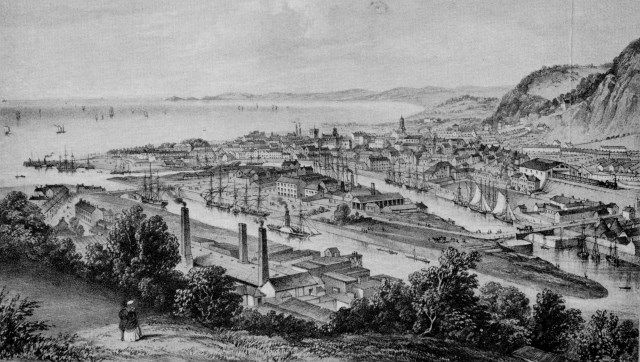Prospect Tower - Bats and a copper bottomed story.
- Graham Watkins
- Apr 21, 2019
- 3 min read
Updated: Nov 30, 2020
Robert Morris moved from Shropshire to Swansea, in 1724, to work as the manager of Llangyfelach Copper Works. When the proprietor of the factory was made bankrupt two years later, Morris took over the works and expanded it. An abundance of coal to fuel the factories and a safe harbour made Swansea a boom town.

The industrial revolution was driving demand and people flocked to Swansea to find work in the new factories. Sheets of copper clad the bottom of ships. Copper pipes transported water while copper alloys like brass and bronze were needed to make components for the new machinery that the factories required. The banks of the River Tawe had become the most heavily industrialised place in the world, producing more than 60% of the world’s copper. Foul pollutants, indiscriminately discharged from the factories, killed everything in the river and the valley filled with acrid smog. ‘Copperopolis’ became the new name for the man made hell on earth.
In 1768 Robert Morris died and his son, John, took over the business. John Morris was a shrewd businessman and diversified into coal mining. He was also a good employer, introducing innovative and previously unheard of benefits for his

workers. Morris created an injury compensation scheme, sick pay and a pension plan. He built Morris Town for his workers where each house had a garden large enough to grow vegetables for the family. Workers leased the plots for three lives (50 years) at an annual rent of 7s 6d (37p). His more important labourers were allocated a plot of common land sufficient to keep a cow. Morris Town was completed in 1796 when it included 141 houses with 619 inhabitants. Today Morris Town is Morriston, a suburb of Swansea.
In 1775, John Morris built Clasemont, a Palladian style mansion, for himself at Pengwern near the site of the current day DVLA offices. Admiral Nelson and Lady Hamilton dined there with the copper magnate during their 1802 tour of Wales. Unfortunately, foul smoke drifting up the valley often filled the house so, in 1805,
Clasemont was dismantled and rebuilt at Sketty.
Morris was involved in other projects and was the driving force behind the construction of the Swansea canal which was needed to transport coal from the upper valley. Its profitability can be gauged by the share price. Shares issued for £11 in 1794 were worth £250 by 1834. Pentre Pit, one of Morris’ coal mines, was continually flooding so, in 1778, he purchased a state of the art steam driven pump from the Birmingham manufacturers Boulton and Watt. When it was installed it was the largest pump in the world removing 1,000 gallons of water with each stroke - a staggering 72,000 gallons per hour.
John Morris became 1st Baronet of Clasemont in 1806 and died on the 25th June 1819. During the 1820s his son, the 2nd Baronet, landscaped Sketty and built ‘Prospect Tower,’ a gothic folly with fine views across the countryside.

Copper production in Swansea reached a peak in the 1880s with about 3000 men working in the industry. By then, copper ore was being imported from as far away as Australia, South Africa and South America. Faced with the cost of importing ore, Swansea’s producers became increasingly uncompetitive and the industry went into decline.






